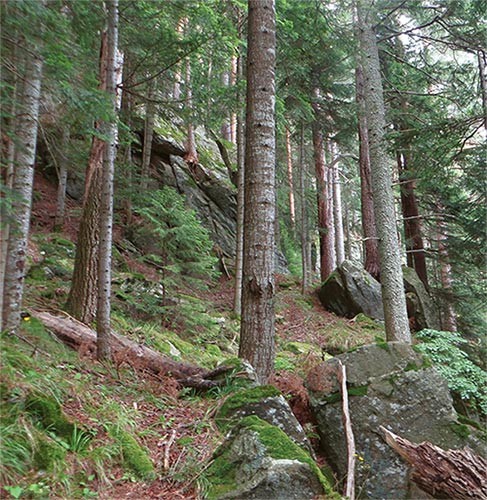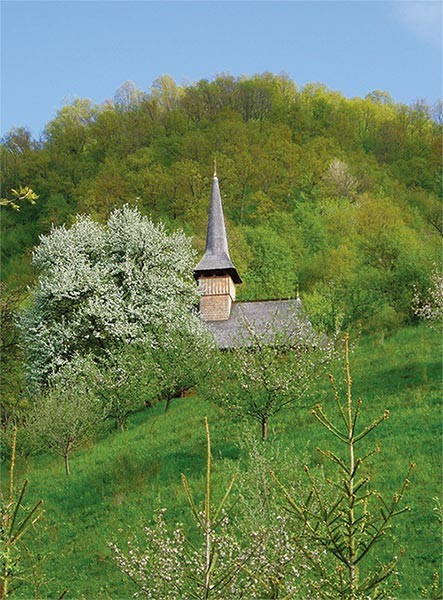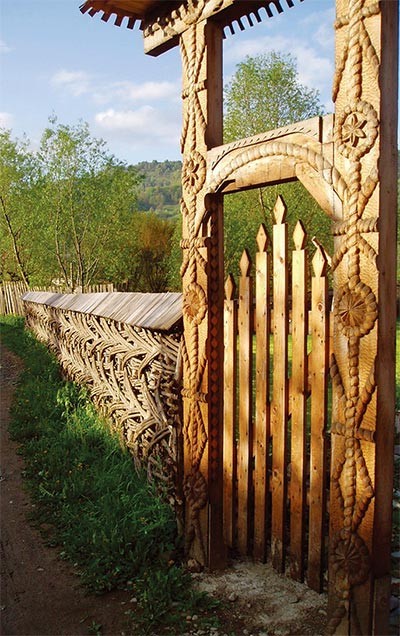
The Carpathians are often referred to as “the Green Heart of Europe.” It’s a big heart: the 1,800-kilometer Carpathian arc is Europe’s largest mountain range and includes the continent’s largest continuous temperate forest ecosystem.
Of all the countries in the region, none is more associated with the Carpathians than Romania, thanks in part to Irishman Abraham “Bram” Stoker’s famous novel, Dracula, set in Romania’s Transylvanian Mountains. While the chance of falling victim to a vampire in Transylvania is pretty slim, encountering a brown bear is more likely. These low – by Alpine standards – forested mountains are home to some of Europe’s largest and rarest species of wildlife, including brown bear (Ursus arctos), gray wolf (Canis lupus), and lynx (Lynx lynx). And Romania has joined ongoing efforts to reintroduce populations of the European wood bison (Bison bonasus), a species that was extirpated from Europe two centuries ago.
More than half of Romania’s forests are managed for protection rather than timber production, and some old-growth stands have been recognized by the United Nations Educational, Scientific and Cultural Organization (UNESCO) for their remarkable biodiversity and populations of endemic, rare, and threatened species. The land that is managed for commercial forestry amounts to one of Europe’s largest growing stocks of productive timber. According to the 2015 State of Europe’s Forests report, modern Romania – a country about the size of Oregon – has 6,950,00 hectares of forestland and is 30 percent forested. In contrast, Maine has an estimated 7,166,00 hectares of forest that covers 90 percent of the state.
Although there are more than 60 tree species in Romania, two-thirds of the forest cover is located in mountain areas dominated by a small suite of broadleaved species and spruce/silver fir (Picea abies/Abies alba). Natural stands made up of entirely one species – European beech (Fagus sylvatica) – are not uncommon, particularly in mature and old-growth stands. A key feature of the Carpathian forest zone is the nearly uniform vertical distribution of forest types. This pattern may fluctuate by latitude, elevation, aspect, geomorphology, and land use, but the same tree species and forest types are represented. In the Iezer Mountains in Romania’s Southern Carpathians, for instance, the species distribution follows a predictable pattern: deciduous forest up to 1300-1400 meters above sea level and a coniferous forest zone dominated by spruce-fir with islands of Swiss mountain pine (Pinus cembra) up to 1800-1900 meters above sea level. The highest altitudes constitute a subalpine zone where dwarf pines (Pinus mugo) intersperse with alpine meadows and pasture.
Silviculture and Forest Management
The legacy of the Hapsburg Empire is writ large on the forest management of Romania. Prior to the First World War, almost all the mountain forests of the Carpathian countries were under the jurisdiction of the Austro-Hungarian Empire, and the time-honored management prescription was the large-scale conversion of broadleaf and mixed-conifer forests to monocultures of spruce. Unfortunately, in the last decade, large-scale conifer dieback in the Carpathians has dramatically increased. While this is attributed to a mosaic of factors, including climate change, bark beetles, and silvicultural practices, one historical factor is that the seed source for the planted spruce was not native to the Carpathians.
There’s been a sea change in European forestry since 1989, with land managers moving away from artificial regeneration toward a system for ecosystem management and natural regeneration more like the one that’s practiced in the northeastern United States. The unwieldy term “close-to-nature forestry” is used to describe European forest management that relies on natural regeneration and all-aged structural complexity.
Socialism cast a long shadow over the history of forest management in Romania. Prior to the end of World War II, nearly three-quarters of the forestland belonged to private owners, but by 1948, 100 percent was under state ownership. Property right restoration has been a stepwise but painfully slow process. The first phase began in 1992, when private individuals were given one hectare of forest back, or 10 hectares per family. By the third phase in 2005, entire forest areas were being returned to the former owners or their heirs regardless of size and original location. The process is still unfolding: approximately 35 percent of land is privately owned at this time; by the end of the restitution process, it’s estimated that about 60 percent will be under private ownership.
Forest cover remained fairly stable shortly before and after the collapse of communism, but forest disturbance rates increased sharply in two waves after 1995 and 2005, according to recent studies published by Berlin’s Humboldt University. Following the first restitution of 350,000 hectares of Romanian forestlands, approximately one-third of the area was clearcut within three years and other areas were overharvested, leading to an overall loss in productive capacity. In Romania, restitution of forestlands without adequate legal and institutional mechanisms resulted in the almost immediate loss of forest cover, leading to irreversible environmental degradation and significant economic losses for the country.
In response, the Romanian Parliament passed a set of management rules in 2006 called the Forest Code. This set of technical, economic, and judicial norms is based on the French forest regime and does not differentiate between state and private ownership. Any timber harvest, even those on private lands, must follow a plan that’s developed by a government-approved contractor. Before the harvest, a government forestry official is required to complete a timber inventory, mark the trees, and tally the volume.
Illegal Logging
Of course, enforcing rules can prove more difficult than passing them. Remote sensing data have shown substantial disturbances inside protected areas. World Bank loans in the early 2000s financed the construction and rehabilitation of Romania’s mountain forest road network, which today helps facilitate the forest exploitation. Despite legislation to mitigate environmental impacts, the state was ill-equipped to deal with enforcement, or with the corruption and graft that subverted these development projects.
In 2007, Romania joined the European Union and began facing more stringent forestry requirements. Illegal logging continues to be a hot-button issue in Romania, as unsustainable timber harvesting threatens some of Europe’s most biodiverse forests. One recent case involves Holzindustrie Schweighofer, a 400-year-old Austrian family company and one of the largest wood-processing companies in Europe. The industrial division of the Schweighofer Group operates three sawmills and two wood panel operations in Romania, which process more than one-third of the country’s softwood and provide 3,500 direct and over 10,000 indirect jobs.
Currently, Schweighofer owns 14,666 hectares of Romanian forestland and buys more than a third of their wood from third-party log yards, the vast majority of which lack systems for keeping track of the logs’ origins. Despite certification by the Forest Stewardship Council (FSC), lack of transparency has plagued the company for years. Since 2015, environmental watchdogs like the Washington-based Environmental Investigation Agency (EIA) have documented how Schweighofer suppliers have systematically used counterfeit paperwork to cover illegal deliveries. This sort of scrutiny led to probation and the disassociation with FSC in March 2017 due to “clear and convincing evidence” of illegally sourced wood. Schweighofer, for its part, claims that the company has followed EU Timber Regulations and gone to extraordinary lengths to implement state-of-the-art GPS tracking, electronic volume verification, and improved stakeholder consultation. While the FSC’s board of directors mull over whether to allow the company to begin a path to recertification, the debate is still unraveling and the truth probably lies somewhere in the middle.
The last 30 years of economic and social upheaval in Romania have led to a major restructuring of land ownership and forest management. Presently, legislative oversight and policies are in place to allow for sustainable forest management. It’s up to the communities in the region to rise to the challenge of implementing the policies.




Discussion *